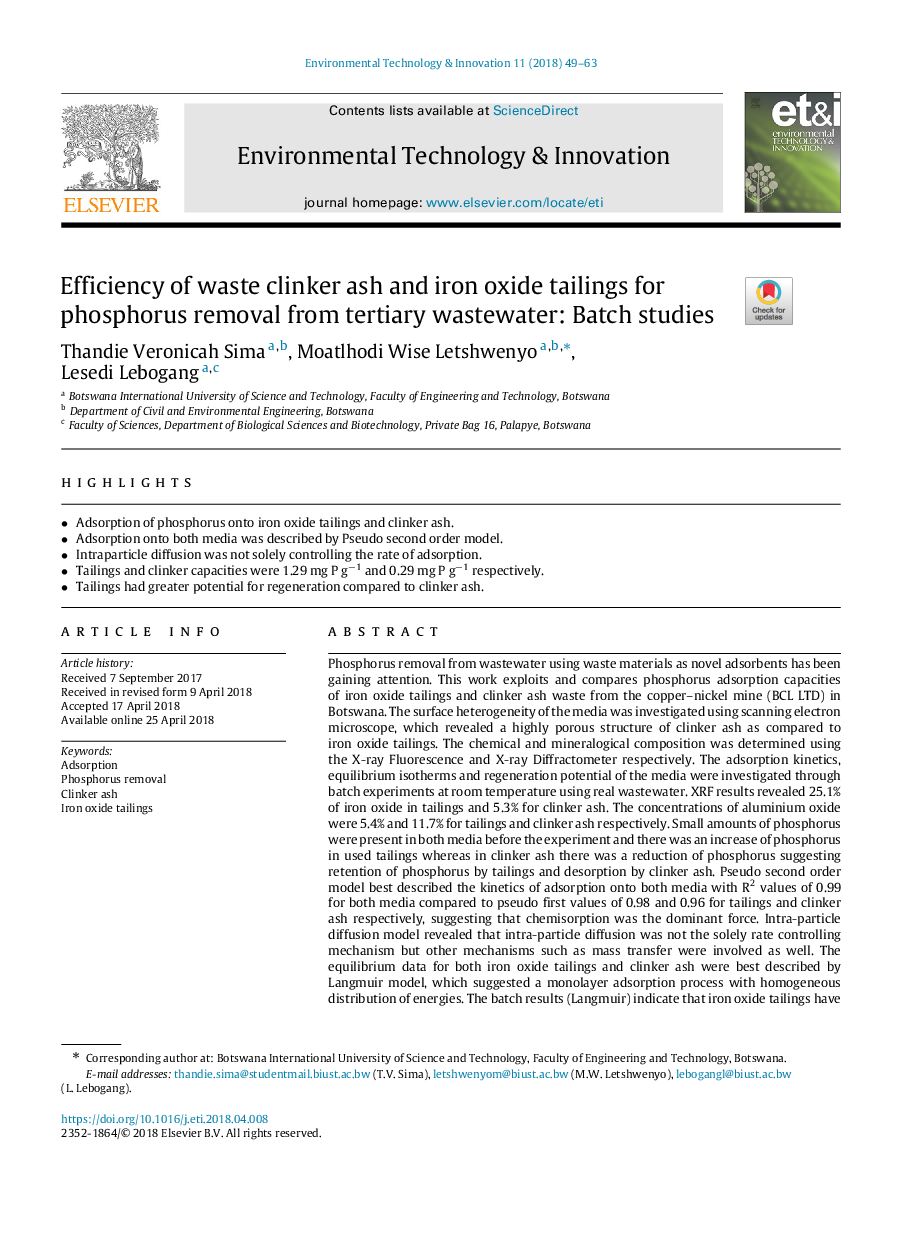| Article ID | Journal | Published Year | Pages | File Type |
|---|---|---|---|---|
| 8857884 | Environmental Technology & Innovation | 2018 | 15 Pages |
Abstract
Phosphorus removal from wastewater using waste materials as novel adsorbents has been gaining attention. This work exploits and compares phosphorus adsorption capacities of iron oxide tailings and clinker ash waste from the copper-nickel mine (BCL LTD) in Botswana. The surface heterogeneity of the media was investigated using scanning electron microscope, which revealed a highly porous structure of clinker ash as compared to iron oxide tailings. The chemical and mineralogical composition was determined using the X-ray Fluorescence and X-ray Diffractometer respectively. The adsorption kinetics, equilibrium isotherms and regeneration potential of the media were investigated through batch experiments at room temperature using real wastewater. XRF results revealed 25.1% of iron oxide in tailings and 5.3% for clinker ash. The concentrations of aluminium oxide were 5.4% and 11.7% for tailings and clinker ash respectively. Small amounts of phosphorus were present in both media before the experiment and there was an increase of phosphorus in used tailings whereas in clinker ash there was a reduction of phosphorus suggesting retention of phosphorus by tailings and desorption by clinker ash. Pseudo second order model best described the kinetics of adsorption onto both media with R2 values of 0.99 for both media compared to pseudo first values of 0.98 and 0.96 for tailings and clinker ash respectively, suggesting that chemisorption was the dominant force. Intra-particle diffusion model revealed that intra-particle diffusion was not the solely rate controlling mechanism but other mechanisms such as mass transfer were involved as well. The equilibrium data for both iron oxide tailings and clinker ash were best described by Langmuir model, which suggested a monolayer adsorption process with homogeneous distribution of energies. The batch results (Langmuir) indicate that iron oxide tailings have a higher phosphorus removal capacity (1.29 mg P gâ1 media) than clinker ash (0.29 mg P gâ1 media). The iron oxide tailings demonstrated high regeneration potential with 87%, 81% and 56% phosphorus removed during first, second and third cycle compared to 24%, 5% and 0.6% shown by clinker ash. This study demonstrated that these two mine wastes have capabilities to remove phosphorus, with iron oxide tailings having more potential than clinker ash. Iron oxide tailings is a better phosphorus adsorbent, thus it could be utilised in improving the quality of wastewaters as well as providing a waste disposal option for the mine.
Keywords
Related Topics
Life Sciences
Environmental Science
Environmental Chemistry
Authors
Thandie Veronicah Sima, Moatlhodi Wise Letshwenyo, Lesedi Lebogang,
